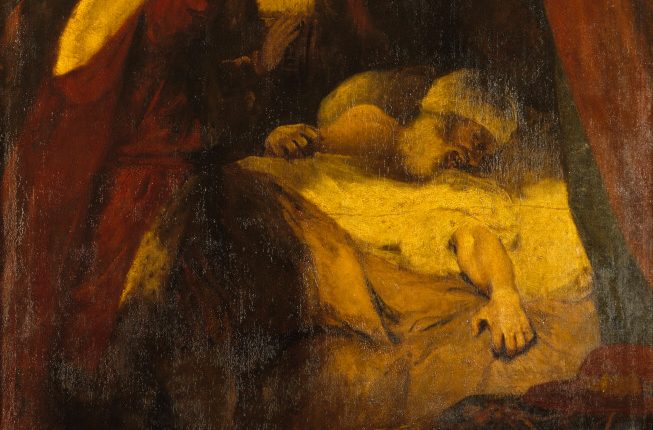A “DEVIL-LIKE figure” has been rediscovered during a recent restoration more than 230 years after it was painted over.
Inside a painting of a Shakespearean scene by 18th Century artist Joshua Reynolds, who died in 1792, is a pale, wide-eyed creature with fangs lurking over a man’s death bed.
The painting is titled “The Death of Cardinal Beaufort”, and has recently undergone some conversation work by the National Trust.
The figure, or as the National Trust calls it, the fiend, was a controversial concept at the time of painting.
While such demons or evil spirits were written about in texts, a visual representation was considered ‘too much’ for the time.
This led to other artists hiding it with layers or paint and varnish after Reynolds’ death, so it went unseen for more than two centuries.
READ MORE ON SCIENCE
“It didn’t fit in with some of the artistic rules of the times to have a poetic figure of speech represented so literally in this monstrous figure,” said John Chu, the Trust’s senior national curator for pictures and sculpture.
“While it was considered acceptable in literature to introduce the idea of a demon as something in the mind of a person, to include it visually in a painting gave it too physical a form.
“There were even people who argued that it should have been painted out, although records of conversations with the artist show he resisted such attempts to alter the work.”
The Trust said: “The gallery also created prints for sale and export, something Britain was dominant in at the time.
Most read in Tech
“Engraver Caroline Watson produced the plates for prints of the Reynolds painting, the first copies showing the fiend, although a second print run in 1792, after the artist’s death, showed an attempt to remove it from the printing plate.”
After being examined by painting experts at the National Trust, it became clear that the fiend in the artwork had been painted over by several people and included six layers of varnish.
Chu added: “It perhaps isn’t a surprise that it had receded so far into the shadows of the picture. It appears it was misunderstood by early conservators.
“Some decades after the painting was done, that area seems to have deteriorated into small islands of paint and become less clear due to the constituent parts of the paint.
“Degradation of successive varnish layers over the years made it even less visible.”











